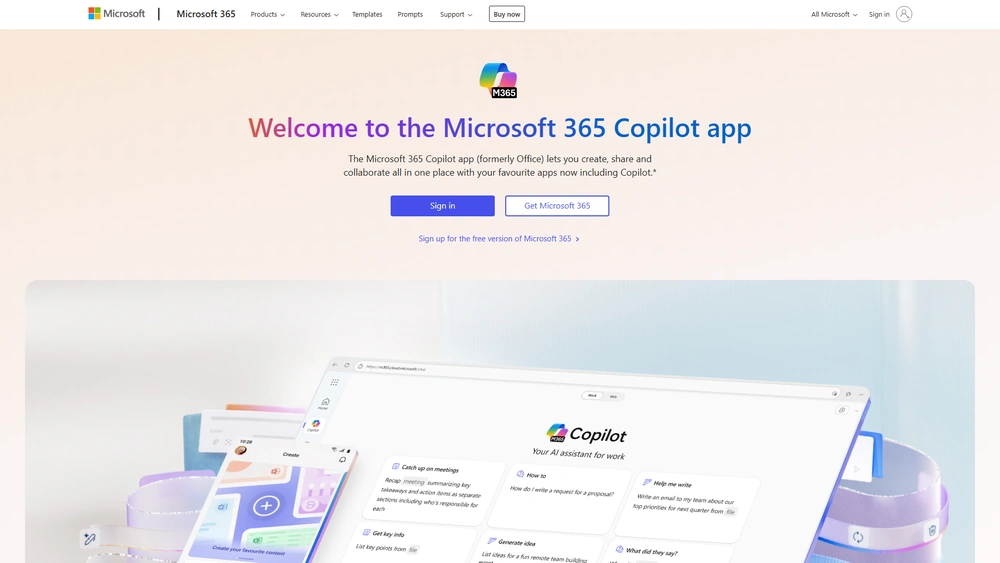Microsoft 365 Overview & 2025 Industry Position
Microsoft 365 remains a cornerstone productivity suite trusted by millions of businesses and consumers alike. Originally known as Office 365, Microsoft 365 has evolved far beyond word processing and spreadsheets into a holistic ecosystem that combines collaboration, cloud infrastructure, automation, and AI-powered productivity tools.
As we move into 2025, Microsoft 365 stands firmly positioned at the intersection of hybrid work enablement, enterprise security, and AI innovation—with Copilot AI and Power Platform integrations weaving a future-ready fabric across its apps. The platform now powers everything from startups on Microsoft Teams Essentials to multinational operations streamlined through Microsoft 365 E5 security and compliance frameworks. From solopreneurs to Fortune 100s, it offers a role-specific suite built for today’s complex workflows.
From Launch to 2025: Microsoft 365’s Journey
Microsoft 365 first launched in 2011 as Office 365—a SaaS pivot that offered Word, Excel, and other apps as a subscription. In 2020, it rebranded as Microsoft 365, signaling a broader mission beyond document editing toward intelligent productivity and scalable collaboration.
- 2011: Office 365 launched for enterprise customers
- 2013: Expanded to small businesses under Office 365 Business
- 2017: Microsoft Teams replaces Skype for Business
- 2020: Office 365 rebranded as Microsoft 365
- 2023: Microsoft Copilot debuts with AI embedded in Word, Excel, and Teams
- 2025: Unified data fabric, AI-powered automations, adaptive pricing models dominate strategy
Strategy thesis: In 2025, Microsoft 365 aims to become an AI-first work platform that integrates data, people, and processes across boundaries—seamlessly and securely.

Microsoft 365 Key Features
Microsoft 365’s features span cloud apps, collaboration tools, AI integrations, and enterprise-grade controls. Here are the highlights users can expect in 2025:
- Microsoft Word, Excel, PowerPoint: Still core productivity tools, now enhanced with Copilot AI suggestions, natural language commands, and dynamic visuals.
- Microsoft Outlook: Smarter inboxes, priority detection via context-aware AI, and scheduling powered by Graph API.
- Microsoft Teams: The “hub for teamwork” includes persistent chat, video calls, file sharing, and seamless third-party app integration.
- Microsoft Loop: A modular workspace that support live collaborative blocks that sync across Teams, Word, and OneNote.
- Zero Trust Security: Multi-factor identity control, endpoint management, and DLP now standard across plans.
- Power Platform: Build flows, apps, and reports, even without code, directly from Microsoft 365 ecosystem.
Workflow & UX
One of Microsoft 365’s strongest points is its deeply integrated user experience across apps, platforms, and devices. Whether on desktop, web, or mobile, the UI maintains consistency with productivity boosters like ribbon commands, tabbed navigation, and personalized menus.
Highlights in 2025:
- Copilot AI: A contextual sidebar adds AI prompts in Word, Teams transcripts, or Excel modeling.
- Fluid Framework: Share and co-edit live components directly in chat, email, or dashboards.
- Universal Search: Microsoft Search pulls cross-app results, including calendar, cloud docs, and people profiles.
Microsoft 365 Pricing Analysis & Value Metrics
Microsoft 365 pricing remains accessible in 2025, with flexible options for home, business, and enterprise tiers. Below is a breakdown:
| Plan | Monthly | Key Inclusions |
|---|---|---|
| Microsoft 365 Personal | $6.99 | One user, 1TB cloud, core apps, AI tools |
| Microsoft 365 Family | $9.99 | Up to 6 users, shared cloud storage |
| Microsoft 365 Business Basic | $6.00 | Email, Teams, OneDrive, web apps |
| Microsoft 365 Business Standard | $12.50 | Desktop apps, email, Teams, bookings |
| Microsoft 365 Business Premium | $22.00 | Security, Intune, Defender, full cloud suite |
Value Assessment: Business Standard hits the sweet spot for most SMBs, while Premium offers serious compliance capabilities for regulated industries—all at sub-enterprise price points.
Integrations & Ecosystem Reach
Microsoft 365 supports a surprisingly vast integration ecosystem that enhances its core apps. Top integrations in 2025 include:
- CRM: Dynamics 365, Salesforce, Zoho CRM
- Finance: QuickBooks, Xero, Stripe
- Project management: Trello, Monday.com, Jira
- Collaboration: Slack, Zoom, Adobe Sign
- Developer tools: GitHub, Power Automate, Azure Logic Apps
Pro Tip: Use Microsoft 365’s Power Automate to turn routine actions—like invoice delivery or Slack alerts—into zero-code workflows.
Pros & Cons
- ✓ AI workflow enhancements through Copilot across all major apps
- ✓ Microsoft 365 Business integration with enterprise-grade security, identity, and compliance tools
- ✓ Extensive third-party app ecosystem
- ✓ Accessible for SMBs, scalable for enterprises
- ✕ Onboarding can be complex for Teams and workflows if not guided
- ✕ Best features locked behind premium tiers
- ✕ Occasional lag in cross-platform sync or offline access
Final Thoughts
Microsoft 365 continues to solidify itself as the all-in-one hub for modern work. In 2025, it delivers remarkable value to solopreneurs, freelancers, remote teams, and global enterprises alike—with intelligent assistants, secure multi-device access, and a commitment to productivity at scale. Those who invest in Microsoft 365 Business or Microsoft 365 Premium will find themselves with a future-proof digital workspace that keeps pace with tomorrow’s work models.
Microsoft 365 FAQ
Microsoft 365 Copilot is an AI assistant built into apps like Word, Excel, and Teams, helping users draft content, analyze data, and automate repetitive tasks based on context.
Yes. Microsoft 365 uses enterprise-grade security, including Zero Trust architecture, conditional access, multi-factor authentication, and encrypted data transmission.
While some features require internet for full synchronization or collaboration, Office desktop apps and synced files can still be used offline with automatic updates when reconnected.
Microsoft 365 offers more AI, security, and compliance features, especially in mid to upper tiers, making it cost-effective for regulated industries despite slightly higher base pricing.
Yes, Microsoft 365 is fully supported on Mac, iOS, and Android, with native apps and responsive web access for all major devices.